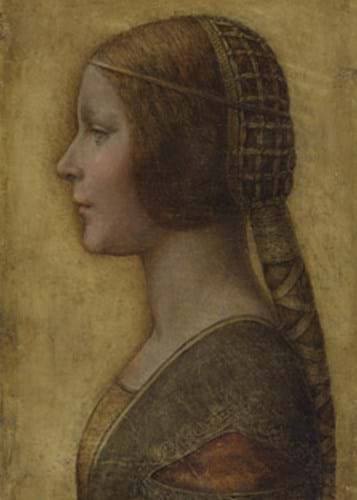
The evidence has just been unveiled by Martin Kemp, Emeritus Professor of Art History at Oxford University and a leading Leonardo scholar, who has already written a book, La Bella Principessa, putting forward the arguments that would turn what was previously thought to be a 19th century pastiche worth about $20,000 into a Renaissance masterpiece valued at up to £100m by one London gallery.
After ATG broke the story about the discovery of a possible Leonardo in October 2009, D.R. Edward Wright, Emeritus Professor of Art History at the University of South Florida, contacted its owner, Paris-based collector Peter Silverman, to suggest a possible link between the portrait and a de luxe copy of the Sforziada a book eulogising Francesco Sforza (Duke of Milan 1451-66), now in the National Library of Poland.
Wright, a specialist in Renaissance iconography, noted that the Warsaw Sforziada and the portrait have near-identical dimensions; that the Sforziada's illuminations by Gian Petro Birago contain allegorical references to the 1496 marriage of Bianca Sforza (identified by Kemp as the likely subject of La Bella) to Galeazzo Sanseverino, Army Captain to the Duke of Milan - Bianca's father, Ludovico Il Moro; and that Birago also depicted the 'Scythian' costumes Leonardo designed for Sanseverino for a jousting tournament in January 1491.
Subsequent analysis of the Warsaw Sforziada by Kemp and Pascal Cotte, head of Scientific Research at Lumière Technology (Paris) - who previously discovered a fingerprint matching that identified as Leonardo's under the surface of La Bella - has established that stitch holes in the volume correspond "very closely" to those still visible to the left of the portrait. They also identified from where in the volume the portrait folio was removed and noted that its thickness matches the remaining pages in the volume.
Kemp and Wright believe La Bella was removed from the Warsaw Sforziada when it was rebound in double-clasped, plain brown leather some time between the late 17th and early 19th centuries.
However, proving that the page came from the Sforziada is one thing, demonstrating that the image was contemporary with the volume's creation is another, a point critics have already picked up on and, doubtless, one which Kemp, Silverman and Cotte will be keen to address.
Many of the world's leading Leonardo scholars have backed Kemp in his findings so far, but there have been notable exceptions, including London's National Gallery director Nicholas Penny, who refused to let the work be included in an exhibition on Leonardo, due to open there in November.
Interestingly, though, Kemp was one of the experts called in to authenticate another work newly attributed to Leonardo, Salvator Mundi, which will feature in the show.
Penny was appraised of the Sforziada findings in July; both he and Camille Bambach, the specialist in Leonardo's drawings at the Metropolitan Museum whom Penny also consulted over the Salvator Mundi, were first invited by Silverman to view La Bella in 2008, but have yet to do so.
However, in an apparent bid to defuse the conspiracy theories flying around the art world, Dr Penny wrote to Silverman on September 19 explaining that La Bella, as a work in coloured chalks, had not been considered for the exhibition as "the main focus is on the paintings of Leonardo from his first Milanese period".
By Simon Hewitt
Additional analysis and reporting by ATG staff




